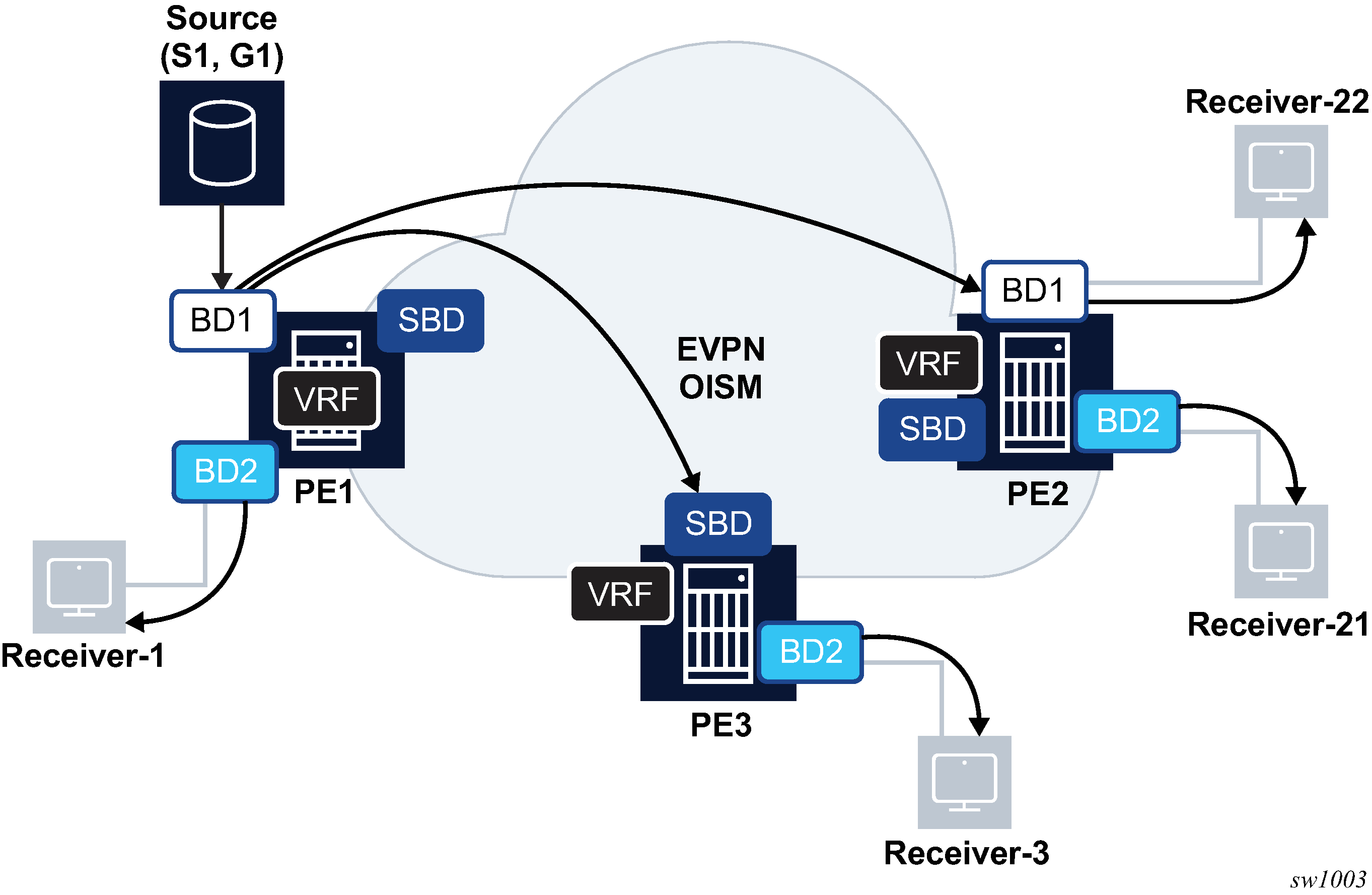In an EVPN OISM network, it is assumed that the sources and receivers are connected to ordinary BDs and EVPN is the only multicast control plane protocol used among the PEs. Also, the subnets (and optionally hosts) are advertised normally by the EVPN IP Prefix routes. The IP-Prefix routes are installed in the PEs' VPRN route tables and are used for multicast RPF checks when routing multicast packets. Figure 1 illustrates a simple EVPN OISM network.

In Figure 1, and from the perspective of the multicast flow (S1,G1), PE1 is considered an upstream PE, whereas PE2 and PE3 are downstream PEs. The OISM forwarding rules are as follows.
On the upstream PE (PE1), the multicast traffic is sent to local receivers irrespective of the receivers being attached to the source BD (BD1) or not (BD2).
Note: OISM does not use any multicast Designated Router (DR) concept, therefore the upstream PE always routes locally as long as it has local receivers.On downstream PEs that are attached to the source BD (PE2), the multicast traffic is always received on the source BD (BD1) and forwarded locally to receivers in the same or different ordinary BD (as in the case of Receiver-22 or Receiver-21). Multicast traffic received on this PE is never sent back to the SBD or remote EVPN PEs.
On downstream PEs that are not attached to the source BD (PE3), the multicast traffic is always received on the SBD and sent to local receivers. Multicast received on this PE is never sent to remote EVPN PEs.
Note: In order for PE3 to receive the multicast traffic on the SBD, the source PE, PE1, forms an EVPN destination from BD1 to PE3's SBD. This EVPN destination on PE1 is referred to as an SBD destination.